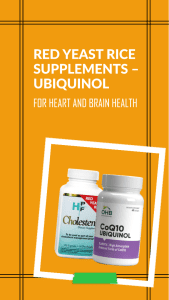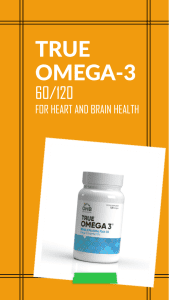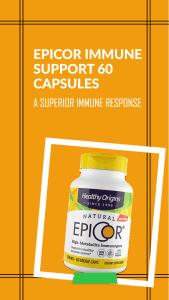Share
What are the 4 Questions You Should Ask Your Doctor?
When you visit your doctor, you know you may wait for 5 times as long in the waiting room than you get to spend with your doctor. But there are 4 Questions you should ask if you are ailing, are in pain, or perplexed by a condition you don’t know much about.
Knowledge is power.
Knowledge has long been referred to by some as a type of power and a source of strength. With knowledge comes understanding, with understanding comes clarity and insight. This enables us to make better informed decisions. Knowledge empowers individuals to take control of their future, discover new possibilities and develop strategies that will provide them with greater opportunities than ever before. It is knowledge that can give us the power to go beyond what was once thought impossible and expand our horizons, paving the way for a bright future both personally and in matters of our own health.
 The Four Questions to use with your doctor visit:
The Four Questions to use with your doctor visit:
- What is wrong with me?
- How long will it take to heal?
- What can I do about it?
- What can you do about it?
I have had an on and off pestering condition since I was nineteen years old. It’s intermittent lower back pain. On a scale of 1 to 10 the pain can be anywhere from a 3 to 8 during episodes where I do something that makes me feel sometimes achey to sometimes in great, intense pain. I have managed to treat and stay in useful shape with chiropractic at times, and later in life I learned about yoga and that helped a lot.
This month I had an episode that reached a level 10, black out level pain. What the hell? What did I do now? That was on January 3rd and 4th. I somehow managed to “lock” into a pain that left me in a cold sweat and nearly wanting to pass out.
It was so intense. I managed to get out of the total incapacitation but I was severely locked in an awkward position and one false move would send me back to that dreaded place. In fact, now a few weeks later, I am still very cautious with how I sit, how I get in and out of bed and it takes about twice as long to dress as it normally would. Mainly, because of fear that I may reinjure myself. Fear is powerful and can be crippling.
Question 1: What is wrong with me?
 On any medical check up, make sure you get a clear explanation of what exactly is wrong. After x-rays, consultations, and visiting a holistic physical therapist, I finally asked the right question and got an answer. I asked, “What is wrong with me? What did I do wrong?”
On any medical check up, make sure you get a clear explanation of what exactly is wrong. After x-rays, consultations, and visiting a holistic physical therapist, I finally asked the right question and got an answer. I asked, “What is wrong with me? What did I do wrong?”
The answer I was given was that I had pulled my sacroiliac joint to the point of injury and the muscles surrounding it locked down in an attempt to protect me from myself. This is the first time in fifty years I thought to ask the question! Why do we clam up when we finally get in to see a doctor? Apparently the brain is very powerful and what’s generally called a muscle spasm was the result of my brain deciding to lock down a portion of the right side of my body.
I was tilted left about 40 degrees off center for a couple of weeks. It took some major effort on my part to tell my subconscious mind that “it’s okay, I understand, and I’ll be more careful when I do yoga.” (Yes, the initial injury that shook me was when I was cross legged on the floor stretching my back.
Another time, I injured the same part of my lower back by sneezing very hard. It’s pretty embarrassing to be locked in a bathroom and sneeze so hard that you wind up on the floor locked in pain, unable to move to reach up and unlock the door.)
Apparently, the subconscious mind interprets danger signals from our bodies and then decides within a split second if the danger signal should be answered with pain or not.
Two stories:
 Story 1: A construction worker jumped off scaffolding and landed squarely on a nail that came up through his boot. He screamed in pain and was driven to the hospital. He was given painkillers through an IV.
Story 1: A construction worker jumped off scaffolding and landed squarely on a nail that came up through his boot. He screamed in pain and was driven to the hospital. He was given painkillers through an IV.
The boot was cut off only to find the nail had come up between his toes and there was no damage to his foot at all. His brain created pain without an injury actually occurring.
Story 2: Conversely, a worker was using a nail gun and accidentally shot a nail through 3 of his fingers and felt no pain at all. He had been working alone. He had no one around to help him. So he drove himself to the emergency room. His brain turned off pain judging from the environment, this was the best course of action, so he could get himself the help he needed.
During the course of my encounter with acute pain, I decided to take the pain meds as I was near incapacitation not only from injury but the fear of more pain. When you are in an acute situation, do what you need to do. Take the medication if you need to. The practice of using such meds for chronic conditions needs to be looked at from a different perspective.
Here’s a podcast with Dr Ranjun Chatterjee and Dr Howard Schubiner. Dr Howard, I’ll call him, has been helping patients with chronic pain to understand what is psychobiological pain and what is purely physiological pain. According to Dr. Howard, most chronic pain is “learned” or “remembered”, a neural pain pathway or understood as psychological and is related to emotional trauma that can date as far back as childhood.
Here’s an example: A soldier in Vietnam was wounded in an ambush attack and medevaced out of the arena for medical attention. His leg eventually healed, he was discharged and he had no lingering issues. Until one day about twenty years later, a helicopter flew from behind him, surprising him and the whoosh whoosh of the helicopter blades. Immediately he felt intense shooting pain in his leg. This is the case of a neural pain pathway that was reginited due to the sound of the helicopter.
If pain is chronic and is on then off again or moves from one part of the body to another, this is a sign that it may be neurological. The triggering of pain from a sound, a smell or the sight of something associated with a former injury is part of a neurological process that can be treated with therapy.
Using Affirmations: The reciting of affirmations that contradict the notion of pain can work wonders. I am working through this myself, since this level of intense pain makes me fearful of reinjury. I’ll let you know how it goes. It’s a process. What are some of my go to affirmations?
I am a miracle. (I know I am made up of 70 trillion cells and have 1.4 quadrillion mitochondria producing energy to power my body.)
I am healthy. (Even with minor setbacks, I affirm that 99.99% of my body is working as it should.)
I love my body. (I accept what I am. I accept who I am.)
I love my back. (Now I am expressing gratitude for my functional body.)
I love my life. (Nothing to complain about here.)
What I am doing when I think these thoughts is generating a vibration that is soothing, helpful, healing and wonderful. Much better than, “My health sucks. I hate my back. I am going to die.” While these statements or thoughts may hold some measure of truth, it’s not what I want to generate or feel or solicit in my body. Remember we are talking about mind body medicine. We can gently and lovingly nudge our thoughts to reflect our best intentions. This is the essence of mind body medicine, self hypnosis, and opening us up to the possibility of healing.
How long will it take?
An important question to get an assessment for the time needed to heal from a physical injury. The body is always healing. Always. As long as the rate of repair outpaces the rate of injury, we have our health. We always want to have a reasonable goal in mind. Sometimes you may have to get a second or even third opinion, if the first or second opinion doesn’t sit well with you.
The physician’s assistant showed me my x-rays and pointed out that I had curvature of the spine, degenerative joint disease, and basically made it sound like I had one foot in the grave and the other on a banana peel. Compare that to the conversation I had with a holistic physical therapist, she said something along the lines of, “You were functioning fine before your injury, right? Let’s get you back to that point.” Totally different viewpoint and perspective.

It turns out that anyone in their 60’s, 50’s or even 30’s is going to have some age and wear and tear on their spine if you scan, x-ray or MRI. It comes with the territory. A bulging disk sounds bad but it doesn’t mean it has to be painful. Remember how the brain has the ability to turn on and turn off pain depending on the circumstances. The brain it seems is the boss.
What can I do about it?

Strengthening, exercising with patience and getting good accurate information is key. Once I started researching sacroiliac treatment, I found a wealth of minor movements that allowed for rapid relief to the pain and anxiety I was feeling. We need to remember to do our part and not assign responsibility for our health solely to others, doctors or otherwise.
What can you, my medical advisor, do about it?
Doctors have toolkits. They have drugs and treatments to get us out of acute pain and acute situations. This is where Western allopathic medicine shines. The key to remember when taking prescription pharmaceuticals, is that there are trade offs and we call those side effects.
All medicines have to pass through the liver and many drugs will mess with the digestive system, causing leaks in the tight junctions of the intestines. We have to be aware to mitigate the negative effects of drugs with appropriate countermeasures. We generally do this with probiotic foods: small amounts of apple cider vinegar, yogurt, kefir, kimchi. Supplements like Gut Support from Ion, Slippery Elm, etc.
A word about pain
I am afraid of that kind of intense pain. I won’t lie. I don’t like headaches. It’s something I need to work on with my mind-body “medicine.” The truth is that pain is really our friend. Think about it this way. There are some who are born without the ability to feel pain.
Congenital insensitivity to pain and anhidrosis (CIPA) is a very rare and extremely dangerous condition. People with CIPA cannot feel pain [1]. Pain-sensing nerves in these patients are not properly connected in parts of the brain that receive the pain messages. https://www.ncbi.nlm.nih.gov/pmc/articles/PMC3564101/
Unfortunately, those who suffer from this disorder live short lives. Pain is experienced or is initiated as a “danger” signal that fires a message to the brain. The brain lights up in about 500 different areas to interpret the message and assess the situation and see if a level of pain is needed to protect the body and to protect life. (David Butler, Heal the Pain with the Brain)
Even though I don’t like it, I am learning to appreciate the relationship and usefulness of pain. The lessons we learn from pain are meant to help us survive better and to learn how to thrive in this miracle body we have. Our bodies are vessels to help us get around and do good things with the time we have on the planet.
It is estimated that there are over a billion different transactions happening in the body every second that we are alive. Thankfully, we don’t have to keep track of most of them. Most are automatic and autonomic. After a short bout of incapacity, I am truly thankful to be able to walk, move about, still in a chair and write this message to you.
Pain can sometimes be an uncomfortable friend, but it shouldn’t be dismissed. Without pain, we would not know when something is wrong or out of balance. Pain is our body’s way of alerting us that something needs attention, so it’s important to pay heed to its warning. One of the most common causes of physical pain is injury and strain or overuse from overexertion or improper use of our bodies.
By listening to the signs and symptoms of pain, we can create a better quality of life by taking preventative measures like “gently” stretching before strenuous activity, eating nutritious food, and getting enough rest and exercise. Pain might not be the best companion at times but it certainly serves an important role in helping us maintain our health and well-being. One way or the other pain is serving us to give us warning signals we should heed.
Action Steps:

- Print out this little card to carry with you to the doctor’s office – a reminder of the 4 questions.
- Prevention of injury is better than any treatment.
- Use Affirmations to “brainwash” yourself with feelings of wellness. It’s free to think good thoughts.
- Uplevel your nutrition. Use supplements to build up needed vitamins and minerals.
More Resources:
It’s been shown clearly that chronic or recurring pain can be tied to trauma or emotional memories that can hold us back from achieving what we really want to accomplish. If you need help with this type of random, chronic and undiagnosed pain, I suggest www.unlearnyourpain.com and Dr Howard Schubiner’s books.
Self Massage for lower back pain
Breakthrough with Healing Chronic Pain – Talks at Google
Training Mental Health Professionals in Relieving Chronic Pain







